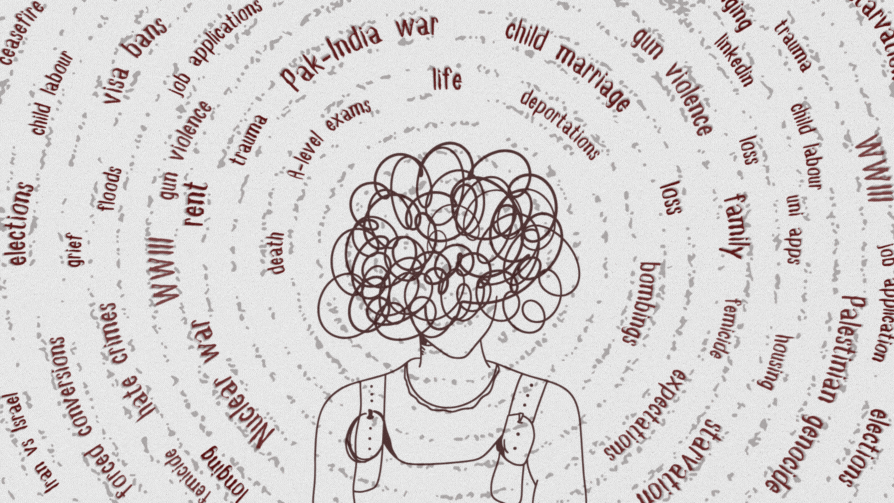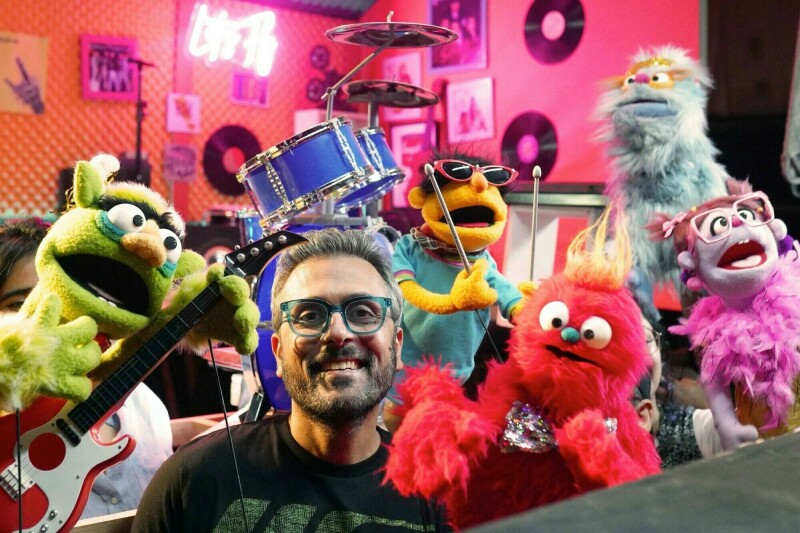Is it becoming more difficult to attend the Aurat March?
The first time I covered the Aurat March back in 2020, Karachi saw hundreds of people gathered at Frere Hall with a renewed sense of urgency, reclaiming their right to a public space that opens its arms to women, minority groups and non-binary folks every year. The venue echoed with chants of “Hum Lekay Rahengay Azadi,” (we will take our freedom, come what may) as hands waved in the air to the echoes of ‘Laal Meri’.
The saying “hell hath no fury like a woman scorned” gained new meaning as attendees raised placards bearing words that could make any man either furious or downright ashamed (depending on the person reading). For many, the Aurat March has almost served as an institution, welcoming anyone willing to learn about women’s rights and unlearn the patriarchal ways of our society. But there’s been a major shift in attitudes towards the march since its first iteration in 2018. And that shift was difficult to ignore at the Aurat March in Karachi on Friday.

Aurat March Karachi returned to Frere Hall this year after hosting two consecutive protests at the Bagh-e-Jinnah. The crowd began gathering around 3pm and soon, Sheema Kermani was joined by a host of other women in a graceful dance of liberation. But somehow, the fervour surrounding them wasn’t the same. Chants of “azaadi” weren’t heard as frequently in the venue, nor were many stirring placards held aloft.
An unexplained sense of fear and paranoia loomed despite tight security measures. More and more participants expressed fear of being photographed or identified while many declined interviews. There were also fewer people attending the march.

I vividly remember being unable to find a place to sit or stand at the previous marches. The venue would be overflowing with protesters, press and celebrities. Security had to be tighter, given the number of men waiting outside to get one peak at a woman’s body, ready to slander her, or worse. And if you lost your friends along the way, good luck finding them because hearing each other over the phone was a nightmare, even if you screamed your lungs out.
And while the absence of chaos contributed to a more organised Aurat March experience this year, it was also underwhelming. Having observed this decline first-hand, I decided to reach out to participants of previous Aurat March events to ask them why they were missing out on the demonstration this year. Their reasons ranged from trauma caused by online bullying following previous marches to cyber threats after being discovered online.
“I faced immense online vitriol, including trolling, slut shaming, rape threats and death threats after being falsely accused and targeted by multiple individuals, leading to significant family conflicts and a fractured sense of self,” one former protester shared with Images. Part of the Aurat March 2019 — their first and last — they recalled how their picture holding a placard bearing the slogan “Mera Jism, Meri Marzi” went viral after the protest. The online hate that followed, as well their family’s reaction to the picture, left them scarred.
“The experience resulted in a split personality between my true self and the persona I felt compelled to adopt to navigate the public sphere amidst false rumours and allegations. It’s a stark reminder of the dangers of online harassment and the toll it takes on individuals and their communities,” they said.
Another attendee recalled their harrowing experience of being bullied online after a video of them protesting with the trans community was uploaded online. “This happened in 2021. I categorically told every media person not to take our picture. I told them our lives are in danger and we are here to support the cause of women and minorities. I do not want to be photographed or identified. But no matter what you do, some vlogger decides to record you without your consent and all hell breaks loose.”

Another regular participant of the Aurat March told Images, “I’ve been attending almost every Aurat March for as long as I can remember. I do so without informing my family. But this year, it was just so hard. None of my friends were going so I couldn’t go myself. The Aurat March has helped raise so much awareness but it has also created this divide that wasn’t there before between those who march and those who don’t. Even after all these years, people don’t know or don’t want to know about the stories behind our slogans. They don’t bother reading and I guess we are tired of explaining. Last year, we made sure we don’t bring any placards to the march that could be used against us. Still, the trolling continued. This year, none of us went.”
Each year has witnessed increased misrepresentation of the Aurat March on social media. Women are dragged through the virtual mud for participating in something “vulgar”, courtesy of the way it is depicted by those who fail to understand the purpose of the march. The bias against women also shapes what parts of the Aurat March are covered by the media and how, with instances of male reporters mansplaining women’s slogans to them on the ground.
Case in point — this instance of a ‘reporter’ arguing with a girl over her decision to call out Khalilur Rehman Qamar instead of simply reporting on the matter. There was also this instance of a woman sharing her encounter with a reporter who asked a suggestive question that placed the blame of rape on women.
In 2019, film student Javaria Waseem tweeted about her sister’s experience with online harassment following the Aurat March. “I have a 16 -year-old sister who posted on her Instagram supporting the Aurat March and a random group of boys made a group just to abuse and harass her, calling her names and talking about doing sh*t with her. SHE IS JUST SIXTEEN,” she wrote in a thread on X that included screenshots of abusive messages her sister had allegedly received.

A 2019 article also discusses a spike in online threats following Aurat March events across the country, especially after pictures and videos of certain placards and attendees go viral, putting their safety at risk. In 2021, there was also an instance of a doctored video falsely showing participants raising blasphemous slogans, exacerbating the online hate directed towards marchers and organisers.
And in response to the backlash, we have also seen dialogues aimed at understanding the slogans, expressions and visuals of the Aurat March. Organisers have time and again laid emphasis on reading the manifestos before calling out the marchers but the incessant trolling continues to shape the narrative of Aurat March online.
Actor Mira Sethi, among many others, addressed the confusion at the demonstration yesterday. When approached for a comment, she told me, “The fact is that when we talk about freedom, we do not talk about obscenity, nudity, insolence or indecency. We only ask for one thing and that is autonomy.”
Another attendee emphasised on the importance of marching without losing faith, especially during such polarising times. “Marching and speaking up, in whatever way, in whatever format, in whatever expression, artistic expression or just verbally and physically, however you want to communicate your story, this platform is for those people. And if you can’t relate with it, you can’t relate with it, you don’t want to empathise with it, you don’t empathise with it. But that doesn’t mean that these gatherings are not important. It’s a message and a yearly reminder that these things are happening. If these things did not happen, if women weren’t discriminated against, we wouldn’t have seen this march. This is a repercussion and a result of what women have gone through and I think it’s a really beautiful one.”














Comments